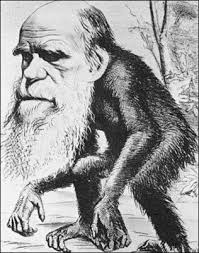We’ve gone big on context this year. You have to do. Long gone are the days when you could tick off the social, historical and cultural context bullet point of the mark scheme by vaguely mentioning that ‘the audience would have been shocked by Juliet’s defiance because there was a patriarchal society in the Elizabethan era’. There was a time (forgive the pun) when that would bank you a Band 3 ‘clear’ C grade annotation. Not any more. Not that that’s a bad thing of course. There are blindingly obvious reasons for the need to relate texts to the periods that they were written (or set) and my feeling has always been, if you’re going to ask GCSE pupils to do that (which you should), then you might as well do it properly. The much larger focus on context across pretty much all literature assessment criteria means that previous dabblings have now become necessity.
But how much context, in a pupil essay, is too much? What are some of the most common errors to overcome? And are all English teachers really ready for this new era/period/age of teaching context? When marking Yr10 mock papers on Romeo & Juliet and Jekyll & Hyde recently I tended to find the following issues:
- Getting the texts mixed up (Jekyll became an eminent Elizabethan while Juliet became a virginal Victorian)
- The dreaded film references (‘Tybalt tried to shoot him at the petrol station’)
- Forgetting to include any context – although far less of this than in our first J&H assessment at the start of Year 10
- Neglecting opportunities to see context in the wider sense of literary history (e.g. genre/themes)
- Misusing terminology (‘The men fought duels in this time because it was a patriarchal society so they needed to defend their honour)
- Vague references (‘at that time people would get really offended by this’)
- “Bolt-on” context – often impressive micro history essays that were then not linked at all to themes or, especially, language
- Overgeneralising and oversimplifying (‘everybody at this time believed in god’)
- Big misconceptions
What kind of misconceptions? The biggest, multiple offender was in response to the extract I’d chosen from Jekyll – the maid’s description of the murder of Sir Danvers Carew. Things like this:
- ‘Darwin created the idea that modern day humans evolved from apes’
- ‘Darwin’s theory says we came from monkeys’
There are a few possible explanations for this, I think:
- The pupils aren’t able enough to understand Darwin’s theory (very unlikely – there were some of these clangers among otherwise excellent essays)
- They aren’t being taught Darwin properly in science lessons (extremely unlikely, unless they’ve had some rabid creationist for cover)
- Their English teacher didn’t explain it very well (possible)
- Their English teacher didn’t understand the theory in the first place (my team are a Tefal-headed bunch of boffins so I’d like to think this is unlikely…)
- They’ve forgotten the theory, leading to misconceptions over time (most likely)

I banged out an email, along the lines of make sure you go back over Darwin and included a bit from a Guardian article about common Darwin myths, that we might want to show the pupils:
Darwin said we come from monkeys. Nope. He never said that. This common misconception belies a profound misunderstanding of evolution. Saying we come from monkeys is like saying you are the child of your cousin. Darwin said that monkeys, apes and humans must have a common ancestor because of our great similarities compared to other species. Even in his day it could be shown that we are more similar to apes than apes are to monkeys.
One of my boffins @Tom_Briars replied with an excellent piece he’d been using with his class to try and elicit sophisticated responses from his class:
If the anthropomorphous apes be admitted to form a natural sub-group, then as man agrees with them, not only in all those characters which he possesses in common with the whole Catarrhine group, but in other peculiar characters, such as the absence of a tail and of callosities, and in general appearance, we may infer that some ancient member of the anthropomorphous sub-group gave birth to man. (‘The Descent of Man’)
Now this is the kind of homework that English teachers should, indeed need to, be doing if they are to really do context justice. Tom went on to point out that getting pupils to highlight the popular misconceptions (ones that would have been prevalent among many at the time of Stevenson’s writing) could prove fruitful: ‘is there anything incorrect about saying that Darwin’s research on natural selection helped to popularise the theory that humans evolved from apes (even if it was a mistaken belief)?’
There is, I think, much mileage in this. As long as it isn’t bolted on. Let’s go back to the original quote that provoked most of these errors in understanding: Mr Hyde’s ‘ape-like fury’. The key is, perhaps, in the simile ‘ape-like’ – following the Darwinian misreading, it can be taken as a direct simile (he’s acting like an ape) or, with a nuanced acceptance of Victorian misconceptions of his theory, as a bit of a qualifier (he’s acting like something similar to an ape i.e. ‘our anthropomorphous sub-group’).
We don’t just owe getting this right to our science colleagues. Are we helping make meaningful links (rather than just knocking out general comments about suicide leading to hell) with RE as well? To do context well you’ve got to really do your homework. I’m lucky that I’m a big enough loser to occasionally enjoy watching documentaries of an evening, pen in hand, looking to pick up titbits about whatever text we’re studying. Just last night I watched the fascinating BBC4 doc ‘How the Devil got his Horns’ and noted down the source reference to Lucifer as the ‘fallen angel’ in Isiah:
How art thou fallen from heaven, O Lucifer, son of the morning! how art thou cut down to the ground…
I started to make further notes about how I could use this stuff in Jekyll and Hyde:
- Jekyll as the supposed paragon of virtue that becomes the fallen Hyde.
- Find a link between the fusion of alliteration and metaphor and the description of Hyde as having ‘Satan’s signature upon [his] face’.
- The fact that the devil was known as ‘the little master’ linking nicely to the ‘dwarfish’ Hyde’
- Must remember to introduce the term eschatology (not to be confused with scatology)
- Satan until 6th century was presented in iconography as a blue angel – check for colour symbolism
- Satan hardly featured in the bible – invented as an archetypal bogeyman in the same way as Stevenson invented Hyde?
Looking back, some of these scribblings have got lots of potential and others seem a bit half-boiled. But these nuggets of knowledge will come in handy at some point; I’ll bounce these ideas around with my colleagues, refining and adding to them before they come into my classroom.
So let’s continue to do this properly. Let’s make sure we make our pupils avoid the common errors and really bring these potentially dusty texts to life. Let’s switch ‘Love Island’ over and get the bic out for ‘Stamp Collecting in the time of the Georgians’. You know it makes sense…
Thanks for reading,
Mark

